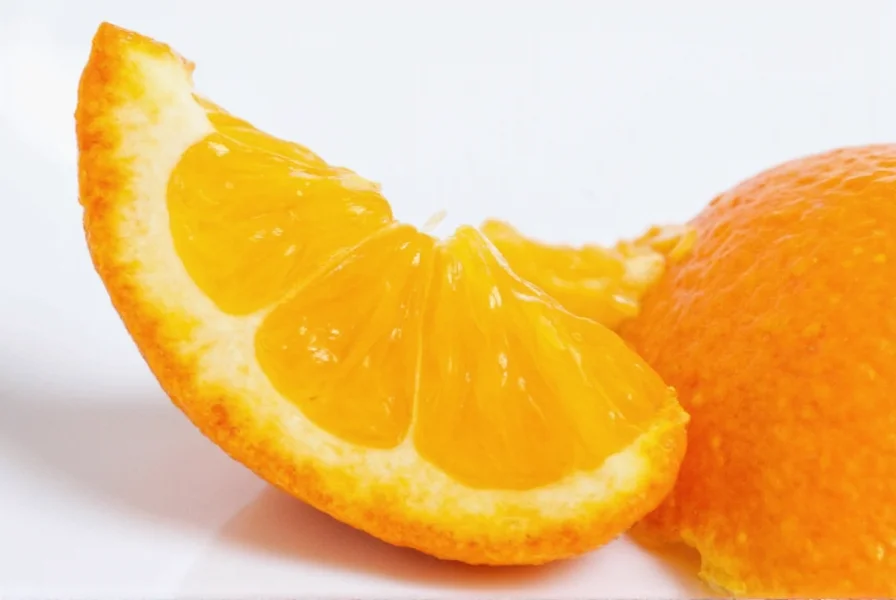Dry orange peel is a versatile citrus ingredient that can transform your cooking and baking with its bright, zesty flavor. Whether you're making baked goods, beverages, or savory dishes, this guide provides expert-backed tips on how to use dry orange peel effectively, store it properly, and avoid common mistakes for maximum culinary impact.
Table of Contents
- What Is Dry Orange Peel?
- Why You Should Care About Dry Orange Peel
- Practical Tips for Using Dry Orange Peel
- Buying Guide: Choosing the Best Dry Orange Peel
- Common Mistakes to Avoid
- Frequently Asked Questions
- Conclusion
What Is Dry Orange Peel?
Dry orange peel is the outermost zest layer of oranges that has been carefully dehydrated to preserve its essential oils and concentrated flavor. Unlike fresh zest, which loses potency quickly, dried orange peel maintains its vibrant citrus aroma and taste for months when stored properly. This process removes moisture while retaining the natural compounds that give orange peel its distinctive flavor profile.
According to the USDA FoodData Central, dried orange peel contains high levels of flavonoids like hesperidin and naringin, which contribute to its antioxidant properties and health benefits. It's commonly used in baking, beverages, and cooking to add complexity without overpowering other ingredients.
Why You Should Care About Dry Orange Peel
Dry orange peel is a culinary powerhouse that offers unique advantages over fresh alternatives. Here's why it deserves a spot in your pantry:
- Enhances Flavor: Adds a bright, citrusy note to both sweet and savory dishes without acidity. For example, it complements chocolate, spices, and herbs beautifully.
- Boosts Aroma: The essential oils release fragrant notes that elevate the sensory experience of your food and kitchen environment.
- Health Benefits: Rich in vitamin C and antioxidants, research from the Journal of Agricultural and Food Chemistry shows it supports digestion and reduces inflammation.
- Long Shelf Life: Properly stored, it stays potent for 6-12 months, unlike fresh zest that spoils in days.
- Cost-Effective: A small amount goes a long way, making it economical for frequent use in recipes.
Whether you're baking holiday cookies, brewing herbal tea, or creating gourmet sauces, dry orange peel delivers consistent, high-quality flavor every time.
Practical Tips for Using Dry Orange Peel
Maximize your results with these expert-tested techniques for incorporating dry orange peel into everyday cooking:
- Baking: Add 1/2 teaspoon per cup of dry ingredients to cookie dough, cake batter, or muffin mixes for subtle citrus notes. For chocolate-based recipes, try 1/4 teaspoon to enhance depth without overpowering.
- Beverages: Stir 1/4 teaspoon into hot coffee or tea for a refreshing twist. For cold brews or smoothies, blend 1/8 teaspoon for a smooth, integrated flavor.
- Infusions: Place 2-3 pieces in olive oil or vinegar for 1-2 weeks to create aromatic bases for dressings or marinades. For quick infusions, heat gently for 5 minutes before straining.
- Cooking: Add to stews, sauces, or braises during the last 10 minutes of cooking to preserve delicate flavors. It pairs exceptionally well with root vegetables, poultry, and game meats.
- Air Fresheners: Place a small bowl of dry orange peel in refrigerators, cabinets, or entryways for natural deodorizing. For stronger effects, mix with cinnamon sticks or cloves.
| Feature | Importance | Recommendation |
|---|---|---|
| Quality | High | Choose organic, unsulfured varieties certified by USDA or EU standards for maximum flavor and health benefits. |
| Packaging | Medium | Opt for resealable, opaque containers that block light and moisture to preserve freshness for up to 12 months. |
| Source | Medium | Prioritize brands that source from California or Florida orange groves, where high-quality peels are consistently produced. |
| Usage | High | Check product labels for specific culinary applications—some are optimized for baking, others for beverages or savory dishes. |
For best results, always use dry orange peel in small quantities and adjust to taste. Its concentrated flavor means less is often more.

Buying Guide: Choosing the Best Dry Orange Peel
Not all dry orange peel is created equal. Here's how to select the highest quality product for your needs:
- Organic and Unsulfured: Avoid sulfured varieties (which use sulfur dioxide for preservation), as they diminish nutritional value and create bitter aftertastes. Look for USDA Organic certification.
- Color and Texture: High-quality peel should be bright orange with minimal white pith. Avoid dull, brownish pieces that indicate age or improper drying.
- Source Transparency: Reputable brands disclose origin details (e.g., "California-grown") and provide batch testing for contaminants.
- Popular Products:
- Organic Dried Orange Peel (50g) – Ideal for baking and cooking. Rich in flavor and free from artificial additives. Perfect for adding to cookie dough or spice blends.
- Orange Peel Essential Oil (10ml) – Great for aromatherapy or adding a hint of citrus to homemade cleaning products. Use sparingly as it's highly concentrated.
- Dried Citrus Peel Blend (100g) – A mix of orange, lemon, and lime peels for a more complex flavor profile. Excellent for tea blends and marinades.

Common Mistakes to Avoid
Even experienced cooks sometimes make errors when using dry orange peel. Avoid these pitfalls to ensure perfect results:
- Overusing: Dry orange peel is highly concentrated—start with 1/4 teaspoon per recipe and increase gradually. Too much can cause bitterness.
- Improper Storage: Keep it in an airtight container away from light, heat, and moisture. Exposure to humidity can cause clumping and flavor loss.
- Using the Wrong Type: Some products contain white pith (the bitter inner layer), which ruins dishes. Always choose peel with minimal pith.
- Ignoring Freshness: If the peel lacks a strong citrus aroma or looks dull, it's past its prime. Replace every 6-12 months for optimal flavor.
- Substituting Incorrectly: Dry orange peel isn't always interchangeable with fresh zest. Use a 1:3 ratio (1 tsp dry = 1 tbsp fresh) and adjust based on recipe requirements.
Frequently Asked Questions
How much dry orange peel equals fresh zest?
Use a 1:3 ratio—1 teaspoon of dry orange peel replaces about 1 tablespoon of fresh zest. Start with half the amount and adjust to taste since dried peel concentrates flavors during dehydration. For delicate recipes like custards, use even less to avoid overpowering.
How long does dry orange peel stay fresh?
Properly stored in an airtight container away from light and moisture, dry orange peel maintains peak flavor for 6-12 months. After one year, it gradually loses potency but remains safe to use if no mold or off-odors develop. Always check aroma before use—fresh peel should smell vibrant and citrusy.
Can dry orange peel make dishes bitter?
Yes, if overused or if the white pith wasn't fully removed before drying. Always use products made from just the colored zest (not pith), and start with small quantities. Toasting dried peel briefly in a dry pan for 1-2 minutes can also mellow any bitterness and enhance its aroma.
What's the difference between dried orange peel and orange zest powder?
Dried orange peel consists of small pieces of dehydrated rind, while zest powder is finely ground dried peel. Powder dissolves completely in liquids and batters, making it ideal for smooth sauces or beverages, whereas pieces work better for infusions and visual texture. For most baking, powder provides even distribution, while whole pieces are preferred for teas and savory dishes.
Are there health benefits to using dry orange peel?
Yes! Dry orange peel contains high levels of flavonoids and vitamin C. Research from the Journal of Agricultural and Food Chemistry shows it may support digestion, reduce inflammation, and provide antioxidant benefits. Avoid sulfured varieties if seeking maximum health benefits, as sulfur dioxide processing diminishes some nutrients. For therapeutic use, consult a healthcare professional.
Can I make dry orange peel at home?
Yes! Simply wash organic oranges, carefully remove the colored zest (avoiding white pith), and spread pieces on a baking sheet. Dry in a low-temperature oven (170°F/75°C) for 2-3 hours or use a dehydrator until crisp. Store in an airtight container for up to 6 months. Homemade versions are cost-effective but require careful drying to prevent mold.
What's the best way to store dry orange peel for maximum freshness?
Store in an opaque, airtight glass jar away from light, heat, and moisture. Keep it in a cool pantry or cupboard—never in the refrigerator, as humidity causes clumping. For long-term storage, add a food-safe silica gel packet to absorb excess moisture. Properly stored, it retains peak flavor for 6-12 months.
Conclusion
Dry orange peel is a culinary secret weapon that adds bright, complex flavor to any dish with minimal effort. From baking and beverages to savory sauces and natural air fresheners, its versatility makes it an essential ingredient for home cooks and professionals alike. By following expert tips for usage, storage, and selection, you'll unlock its full potential while avoiding common pitfalls.
Next time you're at the grocery store or browsing online, choose high-quality, unsulfured dry orange peel and experiment with small quantities in your favorite recipes. Its concentrated flavor will transform ordinary dishes into extraordinary creations—proving that sometimes, the simplest ingredients make the biggest impact.










 浙公网安备
33010002000092号
浙公网安备
33010002000092号 浙B2-20120091-4
浙B2-20120091-4